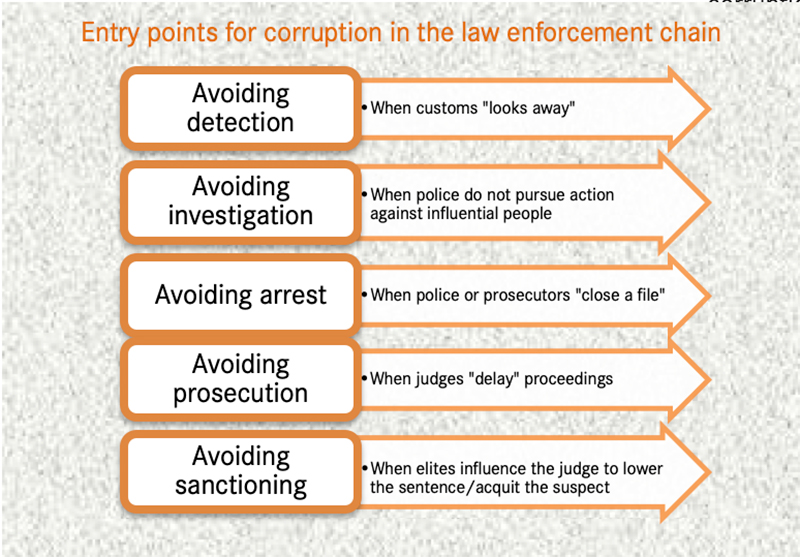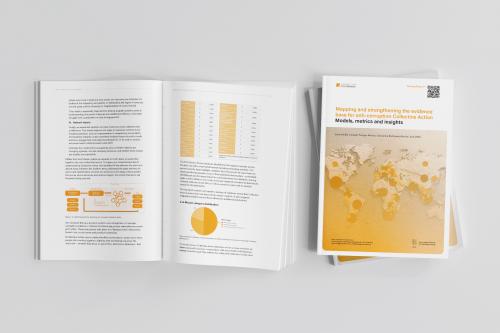How organised crime networks and corruption facilitate illegal wildlife trade in Uganda

Our recent policy brief on Curbing wildlife trafficking in Uganda: lessons for practitioners summarises the main findings from extensive field research on the drivers, facilitators and strategies of wildlife trafficking in Uganda.
The first question took a behavioural lens to the question of why Uganda has become a hub for wildlife trafficking in East Africa. The second question looks at how wildlife trafficking happens in Uganda.
The research evidence suggests that coordination, concealment and corruption are the three basic ingredients of the trafficking networks’ modus operandi in Uganda.
A top-down, orchestrated supply chain
Poverty and weak rule of law generate incentives for diverse groups of people to respond to the demand for wildlife products. And while the supply of wildlife products can be established opportunistically from the bottom up, this is not the predominant characterisation of how large volumes of products are sourced in the region. Rather, the findings suggest that wildlife products are procured, handled and transported through a top-down, orchestrated and organised supply chain.
Four key functional roles sustain this supply chain in Uganda and the region, connecting poachers and local middlemen around wildlife habitats to urban middlemen and buyers in the larger towns and cities. While at its higher echelons there is a need to develop long-term relationships of trust, as one moves to the grassroots the trafficking networks can rely on a large supply of willing accomplices to support their operations.
The number of network members, their relative roles, the nature of the collaboration, the relative distance between them and their physical bases can all differ. The research suggests that this fluid shape and dynamic structure of the network forms the backbone of a strategic infrastructure of cooperation that facilitates wildlife trafficking.
Border crossings – who helps, who turns a blind eye?
Hidden in backpacks, back seats of cars, inside fuel trucks and military trucks or whatever other creative strategy is employed, wildlife products can enter Uganda both through official and unofficial border crossings. The wildlife products find their way from border towns to Kampala where they are consolidated, concealed and cleared for export in preparation for long-haul transport. The research suggests that products most frequently are trafficked out of Uganda via road towards the port of Mombasa in Kenya or via air out of Entebbe Airport. At the same time, the attractiveness of particular routes is not static but changes and adapts to the conditions on the ground.
Along the chain, the trafficking networks are frequently aided by private sector agents, from customs clearing agents and freight forwarders, who help cover up their illicit transport activities, to individuals working at banks and other financial institutions, who work to keep their ill-gained profits from being detected.
While concealment is necessary, it is not sufficient to manage the trafficking of high volumes of wildlife products out of Uganda. It is here where corrupt relationships with public officials come in.
One-off bribes vs long-term relationships
Such relationships are varied and multifaceted, as the research suggests. For instance, corruption can be a one-off problem-solving strategy, for example to secure the release of a trafficker who has been caught red-handed. However, public officials are not only bribed when the network hits a snag in their operation. In other cases, they may be proactively and strategically co-opted to prevent the law enforcement chain from being activated in the first place.
The research evidence suggests that this selective co-optation of useful and strategic individuals into the trafficking network – alongside elaborate concealment techniques – facilitates the trafficking of large volumes of wildlife products into, through and out of Uganda.
The research evidence is not strong enough to establish how widespread such bribery practices are. However, indications that trafficking networks strategically target and co-opt key public officials through bribes shed light on some of the factors undermining the effectiveness of important enforcement measures in place to fight wildlife trafficking. Trafficking networks therefore capitalise on a governance context with high levels of corruption that offers opportunities for illegal activities to flourish.
As the image in this post illustrates, the law enforcement system offers many entry points to opportunistically corrupt public officials and thereby cripple its operation along the trafficking route.
Systematic corruption to evade law enforcement at every step
Corruption therefore undermines a crucial first step to fighting wildlife trafficking, namely, the detection of wildlife animal trafficking. According to the research findings, the reasons why those with monitoring powers might turn a blind eye are varied. They might have been bribed to do so but they might also decide not to seize illicit or suspect shipments if they believe that a powerful figure is involved.
Such elements can impact the entire law enforcement chain, from border police, wildlife authority staff, customs officials and prosecutors to judges. Furthermore, without detection, there is no investigation, arrest, prosecution or sanctioning.
In sum, the strategic use of corruption to evade the law enforcement framework and facilitate the trafficking of high volumes of wildlife products make Uganda, in the words of many research participants, the “path of least resistance”.
Learn more
- Download the full policy brief here.
- Read Working Paper 33: A worm’s-eye view of wildlife trafficking in Uganda – the path of least resistance.
- Find out more about our Public Governance team and their current research projects.
- Learn more about the Basel Institute's Green Corruption programme, including our two-year PMI Impact-funded project to prevent corruption from fuelling illegal wildlife trade along the East Africa - South East Asia route. We are grateful to PMI Impact for funding this valuable research.




